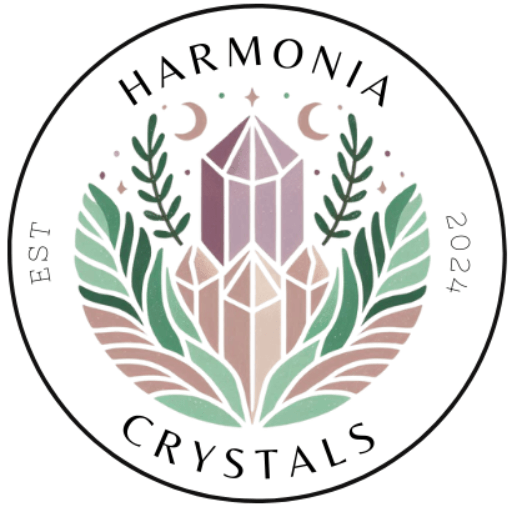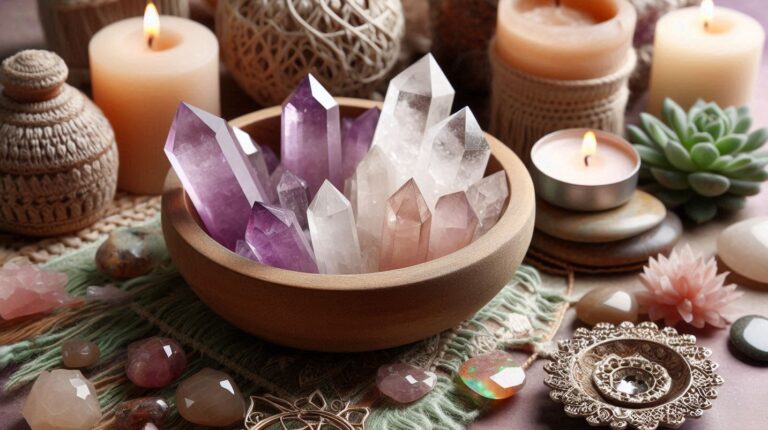Heat Sensitive Crystals: Essential Care Tips and a Complete Guide
Certain crystals, including selenite, fluorite, malachite, opal, and many more, are sensitive to heat and can be damaged when exposed to high temperatures. These crystals may crack, lose their color, or become brittle, making proper care essential to maintaining their beauty and energetic properties.
A Deep Dive into Heat-Sensitive Crystals
Crystals are cherished not just for their beauty but for their healing and metaphysical properties. However, not all crystals are resilient when exposed to heat. Some stones are particularly sensitive to high temperatures, which can alter their structure, appearance, or energy. If you’re using crystals in meditation, healing, or even just as part of your décor, knowing which ones are heat-sensitive can help you take better care of them.
Here’s a thorough look at heat-sensitive crystals and how to protect them.
1. Selenite
Selenite is a delicate, translucent crystal known for its calming and cleansing properties. It’s popular for clearing negative energy but is especially vulnerable to both heat and water.
- How It Reacts to Heat: Selenite is soft and can easily crack or crumble when exposed to high temperatures.
- Care Tips: Store selenite in a cool, dry place, away from sunlight and heat sources.
2. Fluorite
Fluorite is a colorful crystal that promotes clarity and protection. However, it’s highly sensitive to temperature changes.
- How It Reacts to Heat: Fluorite can fade in color or crack when exposed to heat. It can become more brittle under thermal stress.
- Care Tips: Keep fluorite in a shaded, cool area, away from heat.
3. Malachite
Malachite, a striking green stone, is known for its transformational energy but contains copper, making it sensitive to heat.
- How It Reacts to Heat: Malachite can release toxic fumes when heated and may crack or lose its polish.
- Care Tips: Never expose malachite to heat, and avoid prolonged sunlight exposure.
4. Opal
Opal is renowned for its colorful play of light, but it’s highly sensitive to heat because of its high water content.
- How It Reacts to Heat: Opal can crack or lose its brilliance due to drying out or sudden temperature changes.
- Care Tips: Store opal in a slightly humid environment and away from heat sources.
5. Amber
Although not technically a crystal, amber is often used in healing. It’s sensitive to heat and can be easily damaged.
- How It Reacts to Heat: Heat can cause amber to melt or darken.
- Care Tips: Keep amber away from hot surfaces and direct sunlight.
6. Aquamarine
Aquamarine, known for its calming blue hues, is sensitive to heat despite its hardness.
- How It Reacts to Heat: Heat can cause aquamarine to fade in color over time.
- Care Tips: Store aquamarine in a cool, shaded area, avoiding sunlight.
7. Amethyst (Heat-Treated)
Amethyst is widely used for spiritual healing, but many stones are heat-treated to enhance their color.
- How It Reacts to Heat: Heat-treated amethyst can fade or turn brown when exposed to more heat.
- Care Tips: Avoid direct sunlight or excessive heat to preserve its vibrant purple color.
8. Turquoise
Turquoise, cherished for its vibrant color and protective qualities, is sensitive to heat.
- How It Reacts to Heat: Heat can cause turquoise to crack, fade, or dry out.
- Care Tips: Keep turquoise in a cool, stable environment, away from heat and sunlight.
Additional Heat-Sensitive Crystals
Here are some more crystals that also react poorly to heat:
9. Lepidolite
Lepidolite, a mica-based mineral, is known for its emotional balancing properties but is also sensitive to heat.
- How It Reacts to Heat: Lepidolite can flake or crumble when exposed to heat.
- Care Tips: Keep it away from heat sources and handle with care.
10. Kunzite
Kunzite is a pink-to-lilac stone associated with emotional healing, but it’s sensitive to both heat and light.
- How It Reacts to Heat: Kunzite fades in color when exposed to heat or sunlight.
- Care Tips: Store kunzite in a dark, cool place to maintain its color.
11. Azurite
Azurite, a deep blue stone, is known for its spiritual and intuitive properties, but it’s highly sensitive to heat.
- How It Reacts to Heat: Heat can cause azurite to lose its color or crumble.
- Care Tips: Keep it away from direct heat and sunlight.
12. Moonstone
Moonstone is connected to intuition and emotional balance, but it can be damaged by heat.
- How It Reacts to Heat: Moonstone can crack or lose its luster if exposed to high temperatures.
- Care Tips: Avoid leaving moonstone in direct sunlight or near heat sources.
13. Rhodochrosite
Rhodochrosite, often used for emotional healing, is sensitive to heat.
- How It Reacts to Heat: It can darken or crack when exposed to high temperatures.
- Care Tips: Store rhodochrosite in a cool place, away from sunlight.
14. Sugilite
Sugilite, known for its spiritual properties, can lose its vibrant color when exposed to heat.
- How It Reacts to Heat: Heat causes sugilite to fade or lose its luster.
- Care Tips: Keep sugilite away from heat and sunlight to preserve its color.
15. Ametrine
Ametrine is a blend of amethyst and citrine, and it’s sensitive to heat.
- How It Reacts to Heat: Heat can fade the distinct colors of ametrine.
- Care Tips: Avoid exposing it to high temperatures to maintain its color contrast.
16. Topaz
Topaz, especially blue and yellow varieties, is sensitive to heat.
- How It Reacts to Heat: Topaz can fade or crack when exposed to high temperatures.
- Care Tips: Protect topaz from direct heat and sunlight.
17. Labradorite
Labradorite is prized for its flashes of color (labradorescence), but it is sensitive to heat.
- How It Reacts to Heat: Heat can cause labradorite to crack or lose its iridescence.
- Care Tips: Store labradorite in a cool, dry place to maintain its shine.
18. Celestite
Celestite, known for its calming blue color, is soft and can be damaged by heat.
- How It Reacts to Heat: Heat can cause celestite to crack or lose its color.
- Care Tips: Keep celestite in a cool, shaded place to avoid heat damage.
General Guidelines for Heat-Sensitive Crystals
A good rule of thumb is that any crystal with vibrant colors, high water content, or a softer, more brittle structure may be more sensitive to heat. Even hard crystals like quartz can sometimes be heat-sensitive if they have been treated or contain natural inclusions.
If you are unsure whether a specific crystal is heat-sensitive, it’s safest to avoid exposing it to high temperatures or direct sunlight. When in doubt, store crystals in cool, dry places and avoid placing them near heat sources.
- Avoid Direct Sunlight: Many heat-sensitive crystals can fade or crack when exposed to strong sunlight. Store them in shaded areas.
- Handle with Care: Avoid using hot water or cleaning solutions that may generate heat.
- Cool Storage: Keep heat-sensitive crystals in a cool, stable environment, away from heating sources like radiators or electronics.
You might be interested in reading this article about how to properly store your crystals.
Key Takeaways
- Selenite: Cracks or crumbles easily when exposed to heat.
- Fluorite: Fades and becomes brittle with heat exposure.
- Malachite: Releases toxic fumes when heated and can crack.
- Opal: Cracks or loses brilliance due to its high water content.
- Amber: Can melt, darken, or become brittle with heat.
- Aquamarine: Fades in color under high heat or prolonged sunlight.
- Amethyst (Heat-Treated): Loses its color or turns brown with additional heat exposure.
- Turquoise: Cracks or dries out with heat and sunlight.
- Lepidolite, Kunzite, Azurite: Prone to fading, crumbling, or flaking when exposed to heat.
Conclusion
Understanding which crystals are heat-sensitive allows you to properly care for them and preserve their beauty and energetic properties. From selenite’s delicate nature to malachite’s toxic reactions under heat, knowing how to handle these stones can extend their life and effectiveness in your spiritual or healing practices. Always store heat-sensitive crystals in cool, shaded environments and avoid direct exposure to sunlight or high temperatures.
By taking a little extra care, you can ensure that your crystals remain as powerful and beautiful as the day you acquired them.
Looking for more? This article is definitely worth a read!







